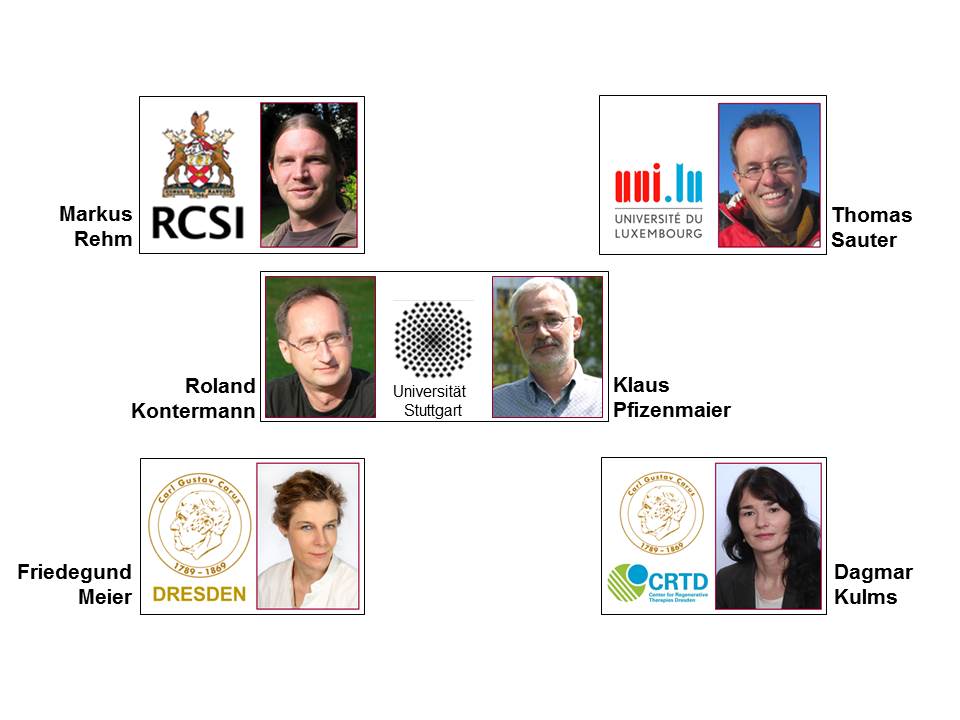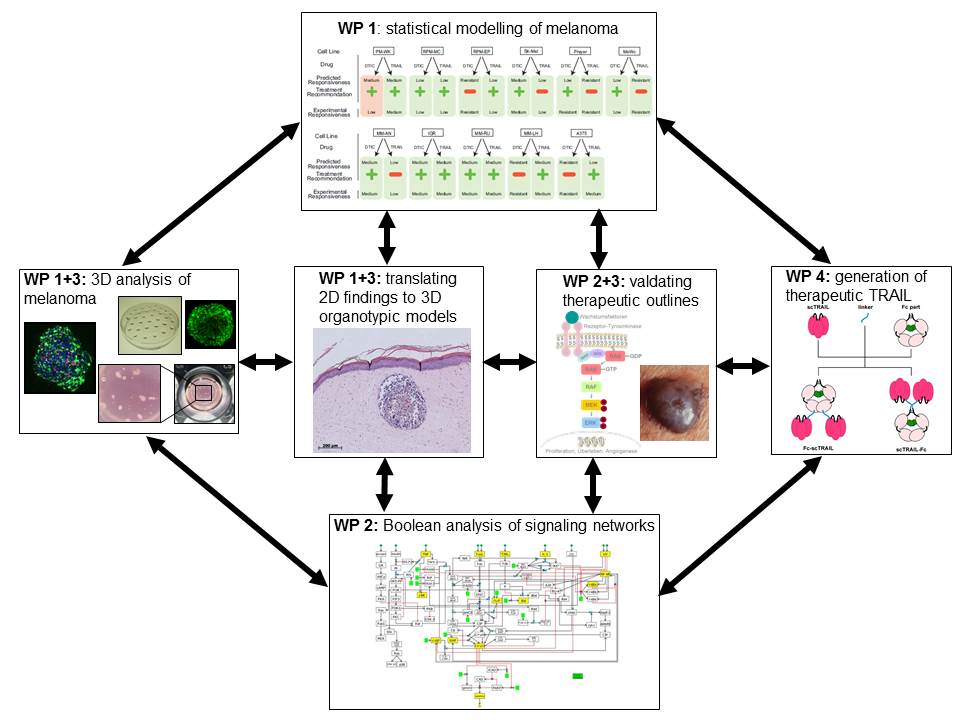Melanoma sensitivity
Predicting individual sensitivity of malignant melanoma to combination therapies by statistical and network modeling on innovative 3D organotypic screening models
Malignant melanoma (MM) represents aggressively transformed pigment cells (melanocytes) of the skin. MM show increasing incidence and present with a very poor prognosis in the metastatic stage. Since MM have shown to be largely resistant against conventional chemo- and radiotherapy, the focus is now on specific inhibition of mutants being activated during cellular signal transduction. However, even inhibitors show only partial therapeutic success and reveal a high rate of tumor relapse. Therefore, a reliable diagnosis of single melanoma cells is required to systematically analyze tumor susceptibility and gain predictive power. Thus, understanding of the molecular biological processes within the tumor and between tumor- and host tissue is mandatory.

Prof. Dagmar Kulms has developed a 3d full skin model in which melanoma spheroids can be embedded at defined size a number to resemble the architecture and physiology of melanoma metastasis (WP1). It is our aim to improve susceptibility towards specific inhibitors by additional induction of programmed cell death (apoptosis). In this context the death ligand TRAIL (tumor necrosis related apoptosis-inducing ligand) plays a key role. Based on TRAIL-Fc fusion proteins, Dr. Pfizenmaier and Dr. Kontermann have generated TRAIL-receptor-agonists (IZI1551) with improved therapeutic activity. The combination of mutation-specific therapeutic approaches combined with systems-biological modelling forms an excellent basis for the development of predictive tools (WP4). Dr. Markus Rehm has invented a mathematical model (SYSACT) which can predict sensitivity of melanoma cell to chemotherapeutic drugs and TRAIL to a high degree. It is a knowledge-driven model that reflects key decisions with the apoptotic process (WP1/2/3). Dr. Thomas Sauter has created a large scale probabilistic Boolean model on apoptotic signal transduction, which represents the systems behavior and delivers network descriptions (WP2). Finally, Dr. Friedegund Meier links the Molecular- and Systems Biology to the clinics by providing for analysis of more than 400 patients samples (WP3).
We aim to develop a standardized systems-based model which can predict individualized melanoma therapy, thereby significantly improving the therapeutic outcome.




